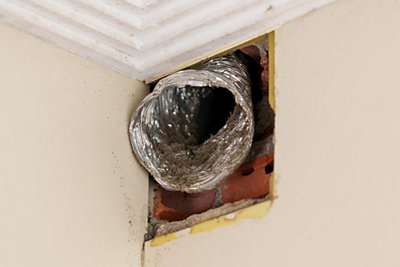What Happens to Your Ductwork After 20 Years: Signs of Aging & How to Repair
What happens to your ductwork after 20 years? It’s likely on its last leg, prone to leaks, inefficiency, and even contributing to higher energy bills. This article dives into the telltale signs of aging ductwork and provides practical steps for diagnosis and repair, ensuring you’re not left out in the cold—or the heat.
Key Takeaways
Ductwork typically requires replacement every 10-15 years, and delaying this can compromise airflow and energy efficiency.
Visible and subtle signs, including excessive dust, strange noises, and increases in energy bills, can indicate deteriorating ductwork that needs repair or replacement.
Regular maintenance, including changing HVAC filters, repairing damages, and professional evaluations, can extend HVAC system longevity and improve air quality.
Decades of Ducts: The 20-Year Milestone
Just as your car needs regular servicing to remain efficient, your home’s duct system also requires attention. Typically, ductwork needs replacing every 10-15 years, but this timeline can be influenced by various factors.
Failing to replace ductwork can lead to compromised airflow and increased repair costs, making timely air duct replacement crucial to maintaining the energy efficiency and overall performance of your HVAC system, including its HVAC ductwork. Installing new air ducts can help prevent these issues, while replacing ductwork ensures the longevity of your system.
Material Fatigue and Your Ducts
The materials used in your ductwork can significantly impact its lifespan. For instance, metal ductwork can deteriorate over time due to thermal expansion and contraction, leading to leaks from seams that are pulled apart. On the other hand, fiberglass ductwork shows signs of aging after just 10-15 years.
Both these scenarios can lead to inefficient HVAC operation and could be a sign that it’s time to consider a ductwork replacement.
Insulation Breakdown
Insulation plays a vital role in maintaining the efficiency of your ductwork. Over time, duct insulation can break down, leading to increased condensation and a subsequent degradation of your metal ducts. This breakdown can cause uneven temperature distribution across your home, making some rooms feel uncomfortably hot or cold.
Moreover, declining ductwork insulation can lead to an increase in your energy costs, emphasizing the importance of timely replacement.
Connective Sealant Lifespan
The sealants used in your ductwork also have a lifespan. Over time, these sealants can degrade due to thermal stress, resulting in issues like disconnections and air leaks. These problems can compromise your HVAC system’s efficiency, leading to increased energy costs and uneven temperature distribution in your home.
Warning Whispers: Subtle Signs It's Time to Replace Your Ductwork
While visible issues with your ductwork are easy to spot, there are several subtle signs that can indicate it’s time for a replacement. One such sign is excessive dustiness in your home, even with regular cleaning. This could indicate holes or leaks in your ductwork, allowing dust and debris to enter your HVAC system and circulate throughout your home.
Strange Noises from the Vents
Unusual noises from your vents are another subtle sign of potential ductwork problems. Noises like rattling or banging may indicate loose connections in your existing ducts, while whistling sounds could point to narrowed sections or damage.
Addressing these strange noises promptly can prevent more severe problems with your air ducts, maintaining both efficiency and air quality.
Unexplained Spikes in Utility Bills
A sudden increase in your energy bills, without a corresponding change in usage habits, can also indicate an issue with your HVAC system. Improperly sized or damaged ductwork can drastically reduce the efficiency of your air conditioner, leading to higher energy costs. Therefore, unexplained spikes in your energy bills could be a sign that it’s time to replace your ductwork.
Persistent Dust and Other Contaminants
If you notice persistent dust and other contaminants in your home, it might be an indication of compromised ductwork in your home’s air ducts. Dust, allergens, mold spores, and other pollutants can circulate throughout your home if your ductwork is deteriorating, affecting your indoor air quality and potentially causing health issues.
Visible Warnings: Obvious Reasons to Call an HVAC Professional
While subtle signs can indicate potential ductwork problems, there are also visible warnings that should prompt you to call an HVAC professional immediately.
Mold Growth and Foul Odors
Mold growth and foul odors are clear signs of a problem with your ductwork. Mold in your ductwork can lead to significant respiratory problems, emphasizing the importance of duct maintenance and timely replacement.
Foul odors such as mustiness or the scent of decay could indicate dust buildup, mold or mildew growth, or the presence of pests, signaling that your ductwork may need replacement.
Pest Infestations in the Ductwork
Pest infestations in your ductwork can cause structural damage, reduce efficiency, and degrade indoor air quality. If you notice unusual noises, odors, or droppings, it’s likely that pests have infested your ductwork.
Addressing these infestations promptly can prevent further damage and health risks.
Damaged and Disconnected Sections
Damaged, disconnected, and leaky ducts in your ductwork can lead to:
Decreased efficiency in your HVAC system
Uneven heating or cooling throughout your home
Poor airflow
Whistling sounds
If you notice any of these signs, it might be time to call an HVAC professional for a comprehensive inspection and potential replacement of your ductwork.
Maximizing Your HVAC Longevity: Proactive Steps You Can Take
Maintaining an HVAC system can seem like a daunting task, but there are proactive steps you can take to maximize its longevity. These range from regular maintenance practices to scheduling professional evaluations and planning for replacement of your hvac unit and other hvac equipment when needed.
Regular Maintenance Tips
Regular maintenance of your HVAC system can extend the lifespan of your ductwork and improve your indoor air quality. Here are some steps you can take to maintain your HVAC system:
Change your HVAC filters regularly.
Ensure there are no leaks or damages in your ductwork.
Schedule regular cleaning by a licensed HVAC contractor to address any immediate buildup of mold or other pollutants.
By following these steps, you can maintain maximum air flow and ensure the longevity of your heating and cooling HVAC system, while enjoying cool air.
When to Schedule Professional Evaluations
Scheduling regular professional evaluations is crucial to maintaining the optimal performance of your HVAC system. As a rule of thumb, you should schedule two professional HVAC tune-ups annually: one in spring for your air conditioning system and another in the fall for your heating system. This will ensure that potential issues are identified and addressed promptly, preventing more severe problems down the line.
Planning for Replacement
When it’s time to replace your ductwork, careful planning is essential. Consider factors like the material used, the location of your ductwork, and potential installation costs. Obtaining multiple quotes from licensed contractors, considering all associated costs, and ensuring you have adequate storage space can help ensure a smooth and efficient replacement process.
Parker & Sons Solutions for Aging Ductwork
When it’s time to replace your ductwork, Parker & Sons are the experts to call. With a detailed inspection of your HVAC system, including your ductwork, we can identify inefficiencies and potential health risks. Our comprehensive service caters specifically to the needs of Arizona homeowners, offering solutions for aging ductwork that are designed to enhance efficiency and air quality.
Comprehensive Ductwork Inspection
Parker & Sons provides a comprehensive ductwork inspection that will help identify any inefficiencies or potential health risks. Their team of highly trained and Trust Certified experts are available 24/7 to address any ductwork issues promptly.
Custom Replacement and Repair Options
Whether your AC ductwork requires repair or replacement, Parker & Sons offers custom solutions designed to enhance the efficiency and air quality in your home. We understand that upgrading your air conditioning system doesn’t necessarily require ductwork replacement, but outdated ducts can reduce the performance of your new air conditioning unit.
Exclusive Benefits
Parker & Sons delivers energy-efficient ductwork solutions specifically designed for the heat and aridity of the state. We are well-versed in local building regulations and the unique environmental demands of our desert climates, allowing us to optimize ductwork performance under Arizona-specific conditions. Call Parker & Sons to schedule an appointment today!
Summary
In summary, maintaining your home’s comfort and indoor air quality requires regular attention to your ductwork. With careful monitoring for signs of aging, regular maintenance, and timely replacement, you can ensure optimal performance of your HVAC system. When it’s time for replacement or repair, turn to the trusted experts at Parker & Sons for comprehensive service tailored to meet the specific needs of Arizona homeowners.
Frequently Asked Questions
Should ductwork be replaced after 20 years?
Yes, ductwork should be replaced after 20 years as it generally starts deteriorating before reaching its maximum lifespan of 20-25 years. Deterioration is primarily due to the movement of the ductwork.
Do I really need to replace my ductwork?
It is often recommended to replace the ductwork when replacing an air conditioner to ensure maximum efficiency and air quality. However, if your ductwork is free from damage, corrosion, and pest infestation, and is relatively new, you may be able to avoid replacement and opt for repairs if needed.
How long should ductwork last?
You should replace your ductwork every 15 years because the materials deteriorate over time, impacting HVAC performance and indoor air quality.
How can I identify if my ductwork needs replacement?
You can identify the need for ductwork replacement by looking for signs such as excessive dustiness, unusual noises from vents, higher utility bills, and visible mold or pest infestation. If you notice any of these signs, it may be time to consider replacing your ductwork.
What are the benefits of replacing my ductwork?
Replacing aging ductwork can enhance the efficiency of your HVAC system, reduce energy costs, and improve the air quality in your home. It's a worthwhile investment for your comfort and well-being.
Related Reading
Subscribe to our e-Newsletter
Stay up-to-date on current news, promotions, and industry tips.

